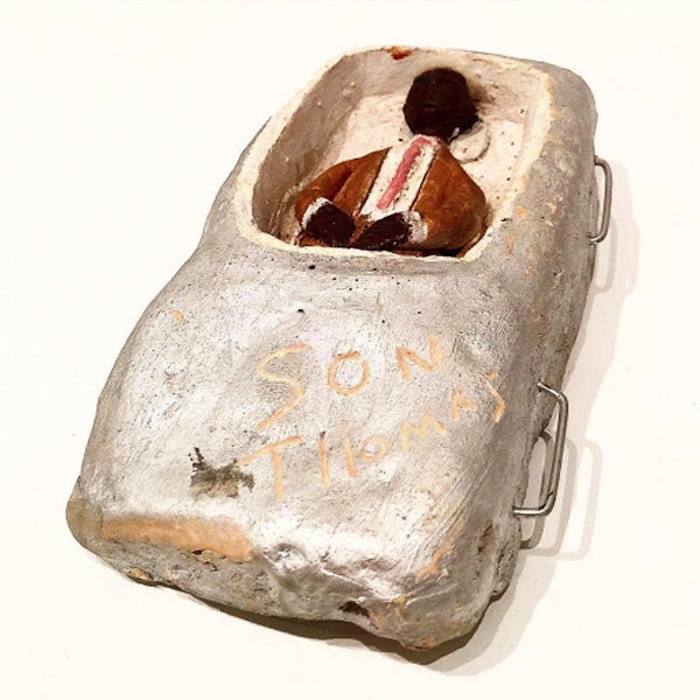
James ‘Son Ford’ Thomas, untitled (1987)
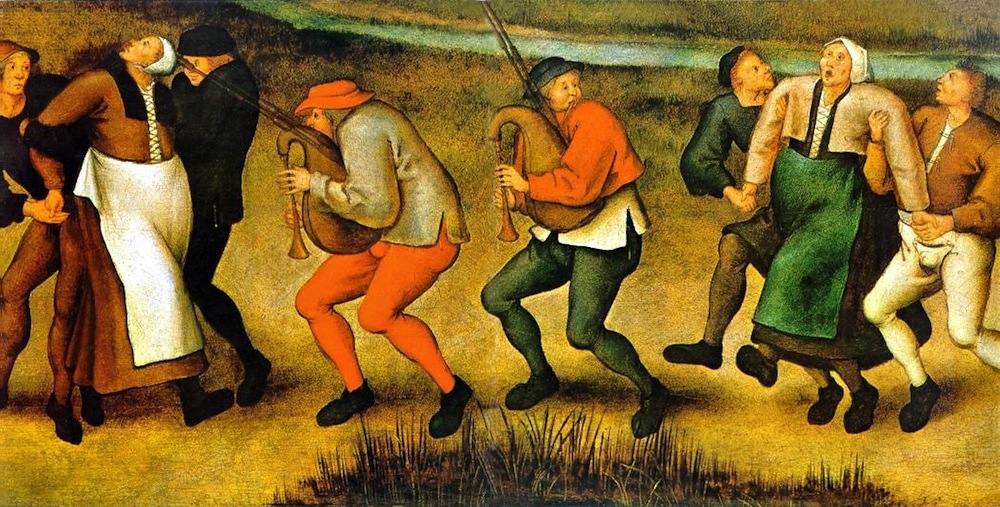
‘Pilgrimage of the Epileptics to the Church at Molenbeek’, by Pieter Breughel the Younger.
Dancing mania (also known as dancing plague, choreomania, St John’s Dance and, historically, St. Vitus’ Dance) was a social phenomenon that occurred primarily in mainland Europe between the 14th and 17th centuries. It involved groups of people dancing erratically, sometimes thousands at a time. The mania affected men, women, and children, who danced until they collapsed from exhaustion.
The outbreaks of dancing mania varied, and several characteristics of it have been recorded. Generally occurring in times of hardship, up to tens of thousands of people would appear to dance for hours, days, weeks, and even months.
Bartholomew notes that some “paraded around naked” and made “obscene gestures”. Some even had sexual intercourse. Others acted like animals, and jumped, hopped and leaped about. They hardly stopped, and some danced until they broke their ribs and subsequently died. Throughout, dancers screamed, laughed, or cried, and some sang. Bartholomew also notes that observers of dancing mania were sometimes treated violently if they refused to join in. Participants demonstrated odd reactions to the colour red; in A History of Madness in Sixteenth-Century Germany, Midelfort notes they “could not perceive the color red at all”, and Bartholomew reports “it was said that dancers could not stand… the color red, often becoming violent on seeing [it]”. Bartholomew also notes that dancers “could not stand pointed shoes”, and that dancers enjoyed their feet being hit.
More here.
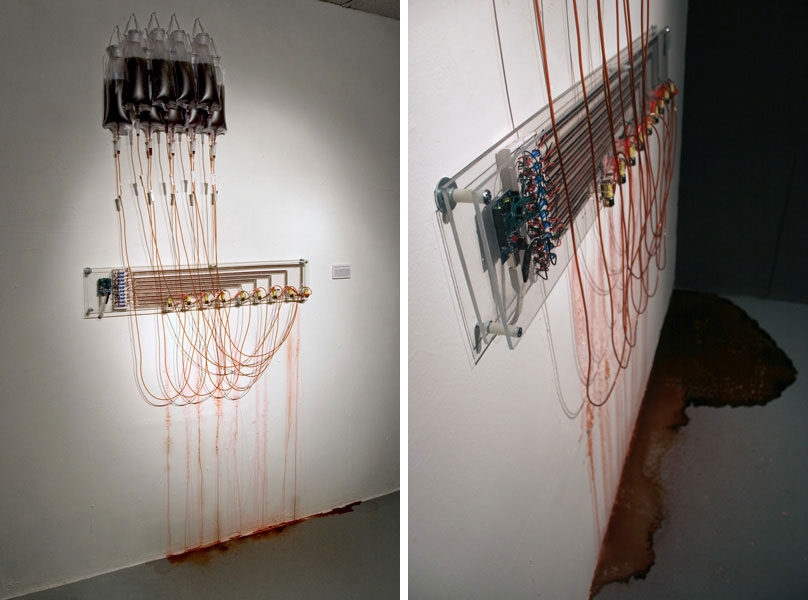
Riley Harmon, ‘What it is without the hand that wields it’ (2008)
As gamers die in a public video game server of a modified version of Counter-strike, a popular online first person shooter, the electronic solenoid valves dispense a small amount of fake blood. The trails left down the wall create a physical manifestation of virtual kills, bridging the two realities. The title is inspired by the Telefon Tel Aviv song of the same name.
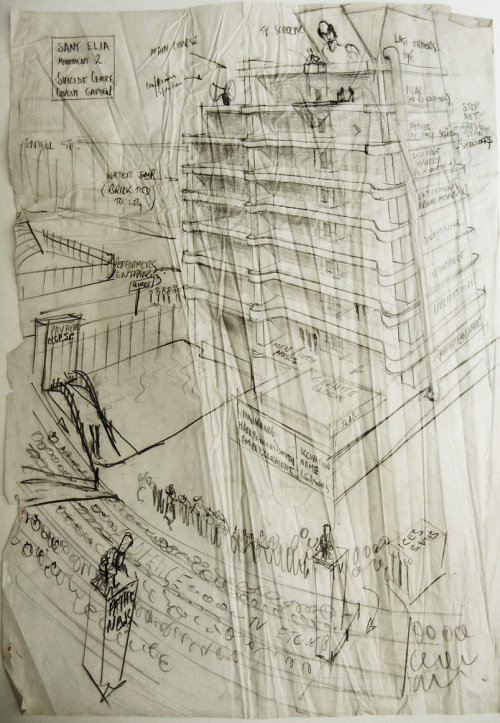
This sketch was done by an (unknown) student of the Architectural Association School of Architecture in London. It is a design for a suicide building:
Jumping is done from the top platform. From the underlying floors, as well as from the audience seating opposite the building, spectators can watch the suicides happen live.
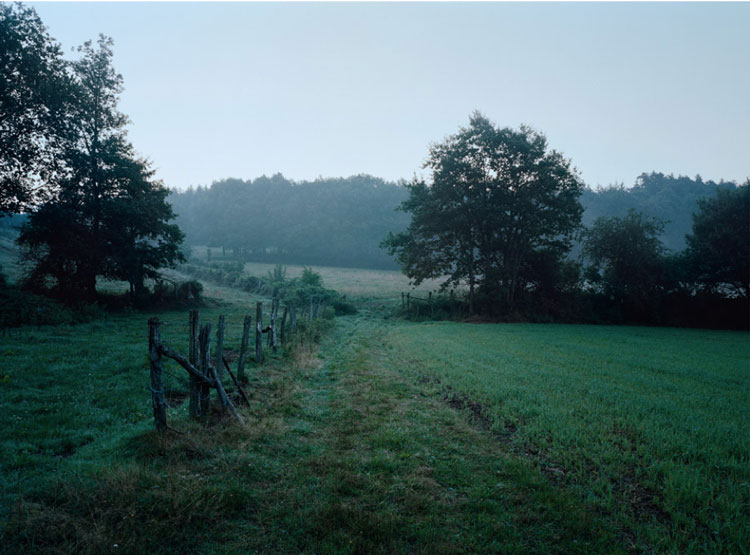
Soldat Eugène Bouret, Soldat Ernest François Macken, Soldat Benoît Manillier, Soldat Francisque Pitiot, Soldat Claudius Urbain, Soldat Francisque Jean Aimé Ducarre, 06:30 / 7.9.1914 Soldat Jules Berger, Soldat Gilbert Gathier, Soldat Fernand Louis Inclair, 07:45 / 12.9.1914 Vanémont, Vosges, Lorraine
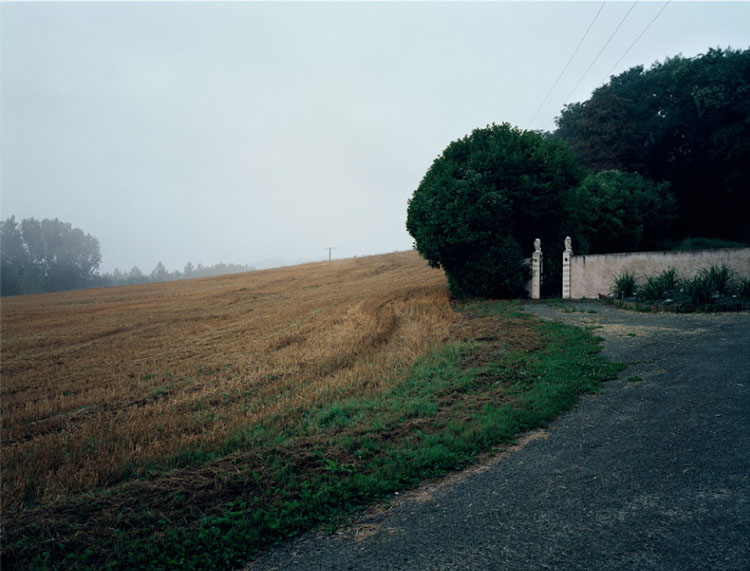
Soldat Alphonse Brosse, Soldat Jean Boursaud, 0:700 / 10.10.1914 Ambleny, Aisne, Picardie
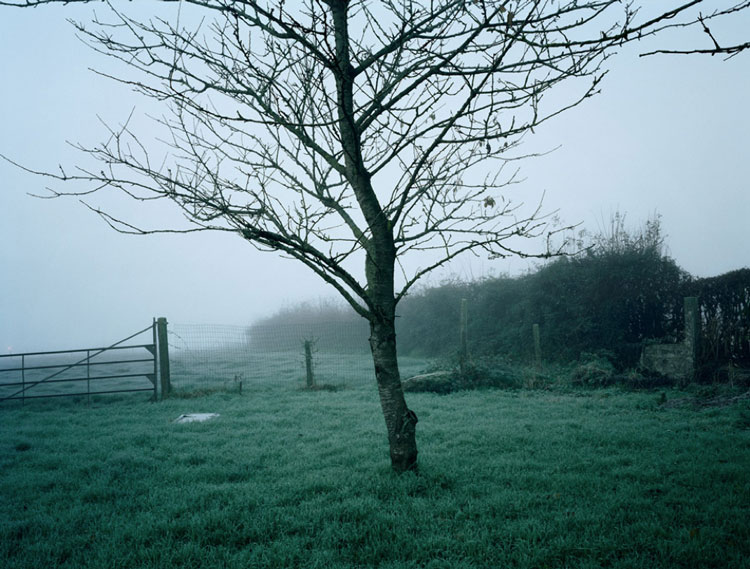
Private Joseph Byers, Private Andrew Evans, Time unknown / 6.2.1915 Private George E. Collins, 07:30 / 15.2.1915 Six Farm, Loker, West-Vlaanderen
From the series ‘Shot at Dawn’, by Chloe Dewe Mathews.
‘Shot at Dawn’ focuses on the sites at which British, French and Belgian troops were executed for cowardice and desertion between 1914 and 1918. The series comprises twenty-three photographs, each depicting a location at which the soldiers were shot. These executions would usually take place in the early morning, before the battle started. All the photographs were taken as close as possible to the precise time at which the executions occurred.